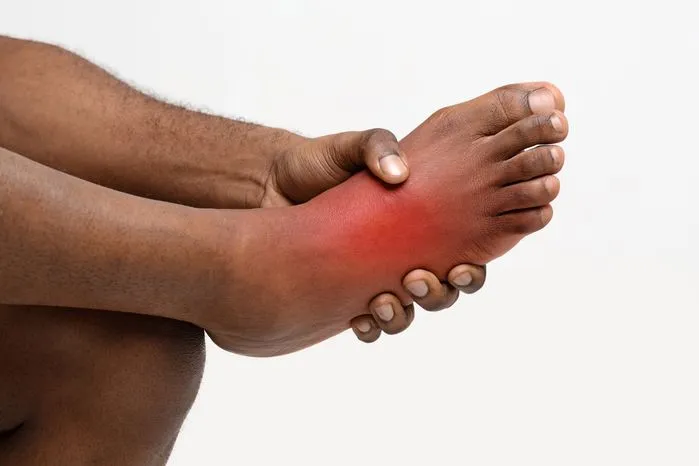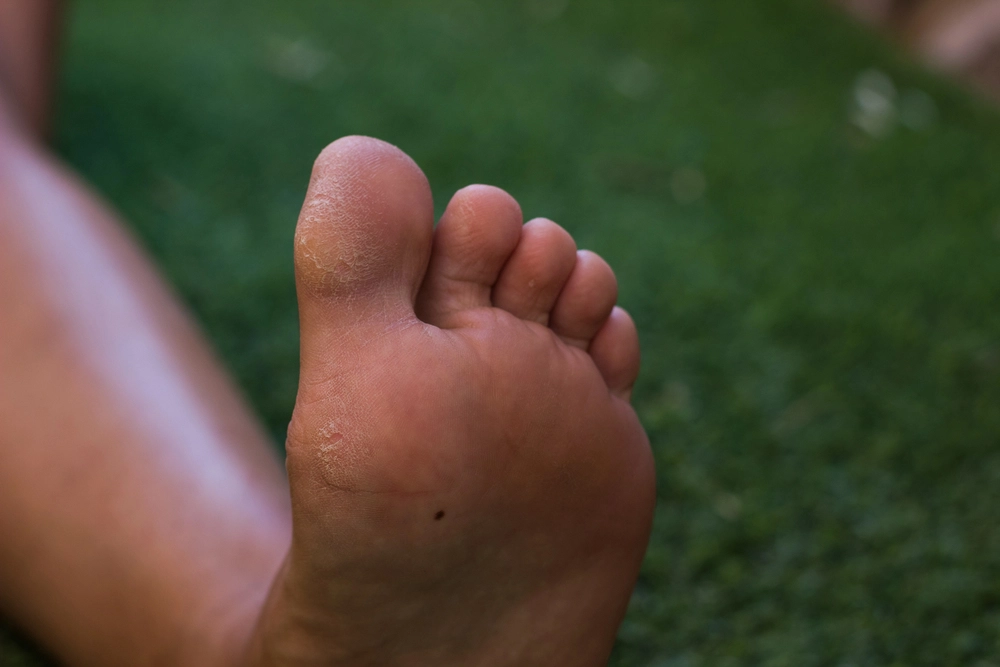.jpg)
Heel pain is quite common. Nothing disrupts normal daily living quite as much as a pain that keeps you from going about with your daily activities. Anyone who repeatedly walks on a hard surface or pushes off their foot to run is at risk of plantar fasciitis. Fortunately, there are at-home remedies, physical therapies, and surgical procedures that can ease the symptoms of plantar fasciitis.
What Is Plantar Fasciitis?
Plantar fasciitis is a common cause of pain at the heel bottom. It involves inflammation of the plantar fascia. The word “fasciitis” means inflammation of a muscle organ” whereas plantar refers to the sole. The plantar fascia ligament is a connective tissue between the front of your foot and the heel bone. It’s responsible for supporting the arch of your foot and acts as a shock absorber.
Causes of Plantar Fasciitis
Plantar fasciitis develops as a result of overstretching or overusing the ligament. However, the definite cause remains unclear in many cases of plantar fasciitis. One might wonder: is plantar fasciitis chronic? In most cases, no. Overstretching the fascia causes small tears which can be solved by a qualified healthcare provider.
Symptoms of Plantar Fasciitis
The major symptom associated with plantar fasciitis is pain at the bottom of the heel or sometimes at the bottom midfoot area. The stabbing pain initially occurs with your first steps in the morning. As you get up and move the pain gradually decreases, but it might return after long periods of standing or when you stand up after sitting. Climbing the stairs can also prove to be a challenge and will require plantar fasciitis treatment exercises such as regular stretching to ease the pain.
Risk Factors for Plantar Fasciitis
Plantar fasciitis can develop without any obvious cause. However, there are factors that increase your chances of developing this condition. They include:
- Age: It is very common in people between the ages of 40 and 60
- Some types of exercises: Activities such as long-distance running, aerobics, and ballet can place a lot of stress on your heel and attached tissue. One effective plantar fasciitis treatment for runners is to wear supportive shoes that absorb some of the pressure on the foot while running.
- Foot mechanisms: Flat feet, a high arch, or even an atypical pattern of walking can affect the way weight is distributed when you’re standing and can put added stress on the plantar fascia.
- Obesity: Extra weight puts excess pressure on your plantar fascia.
- Occupations that keep you on your feet: Factory workers, teachers, and others who spend most of their work hours walking or standing on hard surfaces can be at increased risk of plantar fasciitis.
Diagnosis of Plantar Fasciitis
A plantar fasciitis diagnosis is done based on your examination and medical history. The healthcare provider will check for areas of tenderness in your foot to determine what is the best plantar fasciitis treatment option for you. You may be asked to flex your muscle as the physiotherapist pushes the plantar fasciitis to see if the pain gets worse or better as you point your toe.
In most cases, no imaging tests are necessary. The doctor might suggest an x-ray or MRI to make sure there’s no other problem such as a stress fracture causing your pain. An ultrasound can be useful in confirming whether there’s any thickening, calcification, or other issues.
Plantar Fasciitis Treatment
Most plantar fasciitis patients recover with conservative treatment, such as resting, and icing the painful area You may be required to stretch regularly, and modify or completely g vigorous exercises for plantar fasciitis treatment to be effective. Surgery is only an option when the pain is severe and other treatments have failed.
Non-surgical Treatment
Over 90% of plantar fasciitis improves with simple at-home remedies. Resting, and regularly icing the foot goes a long way in plantar fasciitis treatment. Stretching the calves and performing plantar fasciitis treatment massage is an effective method to relieve the pain that comes with this discomfort. You can get non-steroidal pain relievers such as ibuprofen and naproxen sodium to ease the pain and inflammation.
Other non-surgical treatments for plantar fasciitis include:
- Night splints: Splints hold the plantar fascia and Achilles tendon in a lengthened position overnight to promote stretching while you sleep.
- Orthotics: Custom-fitted or off-the-shelf arch supports help distribute pressure on the foot evenly.
- Injections: Steroid injections provide temporary heel pain relief. Multiple shots can however weaken the plantar fascia and sometimes cause a rupture.
- Ultrasonic tissue repair: This is a minimally invasive procedure that uses ultrasound imaging to guide a needle-like probe into the damaged plantar fasciitis. The probe then vibrates rapidly to break up the damaged tissue which is then suctioned out.
- Physical therapy: A plantar fasciitis treatment physical therapy is done by a physiotherapist who can show you simple exercises to stretch the plantar fascia. You may also be taught how to apply athletic taping to support the bottom of your foot.
Surgical Treatment
Surgery should only be considered when all else fails since it can cause nerve damage and chronic pain.
- Gastrocnemius recession: This is the surgical lengthening of the calf gastrocnemius muscles and can be done at any center for plantar fasciitis treatment near me. It’s an effective procedure for patients who have difficulty flexing their feet, despite a prolonged time of calf stretches. In the procedure, one of the two muscles that make up the calf is lengthened to increase the motion of the ankle.
- Plantar fascia release: the ligament is partially cut to release tension. The procedure is ideal if you need plantar fasciitis treatment heel pain relief surgery and have a normal range of motion.
Bottom Line
There’s no sure-fire way to prevent the occurrence of plantar fasciitis. However, certain preventive measures such as maintaining a healthy weight, wearing the right footwear, stretching your arches and calves can help keep the pain at bay. Always see your healthcare provider if the plantar fasciitis pain becomes unbearable and doesn’t improve.

















